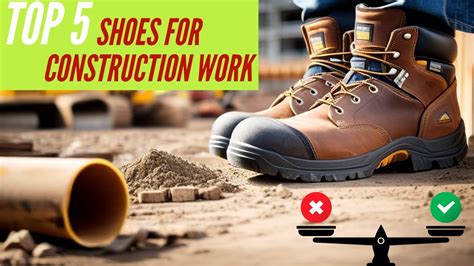Tennis Shoe Work Boots Comfort

When it comes to footwear, comfort is paramount, especially in work environments where individuals are on their feet for extended periods. The concept of tennis shoe work boots might seem like an oxymoron, as tennis shoes are typically associated with athletic activities and boots with heavier, more rugged tasks. However, the fusion of these two ideas brings about a unique category of footwear that combines the comfort and agility of tennis shoes with the durability and protective features of work boots. This blend is designed to address the needs of workers who require both comfort during long hours of physical activity and the safety features necessary for hazardous work conditions.
Understanding Comfort in Work Boots
Comfort in work boots, or any footwear for that matter, is multifaceted. It encompasses several elements, including cushioning, support, breathability, and flexibility. Traditional work boots often prioritize durability and protection over these comfort aspects, leading to footwear that, while effective for safety, can be cumbersome and uncomfortable. The incorporation of tennis shoe technology into work boots aims to rectify this by providing a more ergonomic and comfortable fit without compromising on safety features.
Key Features of Tennis Shoe Work Boots
Several key features distinguish tennis shoe work boots from their traditional counterparts:
- Lightweight Materials: Utilizing materials that are lighter in weight, such as advanced plastics, specialized leathers, and composite materials, reduces the overall weight of the boot, making it easier to wear for extended periods.
- Cushioning and Support: Enhanced cushioning in the insole and midsole provides superior comfort, absorbing the shock of each step and supporting the arch and heel of the foot. This is crucial for individuals working on hard surfaces for long durations.
- Breathability: Incorporating breathable materials and designs, such as mesh panels, helps to regulate foot temperature and moisture, preventing the buildup of sweat and the discomfort that comes with it.
- Flexibility: A more flexible sole allows for a natural range of motion, making it easier to move around the workplace without the stiffness associated with traditional boots.
- Safety Features: Despite the emphasis on comfort, these boots do not compromise on essential safety features like slip resistance, electrical hazard protection, and toe caps to protect against falling objects.
Benefits for Workers
The benefits of wearing tennis shoe work boots are numerous, particularly for workers in industries that require a lot of movement or standing:
- Reduced Fatigue: By providing superior comfort, these boots can reduce the physical strain of a long workday, allowing workers to be more productive and less prone to errors caused by fatigue.
- Improved Mobility: The lighter weight and greater flexibility of these boots make it easier for workers to move around, which can be particularly beneficial in jobs that require climbing, bending, or quick movements.
- Health Benefits: Long-term use of uncomfortable, poorly fitting boots can lead to various foot and leg problems. Tennis shoe work boots can mitigate these risks by providing a comfortable, supportive fit that promotes good foot health.
Challenges and Limitations
While tennis shoe work boots offer a compelling blend of comfort and protection, there are challenges and limitations to their adoption:
- Durability: The use of lighter, more comfort-oriented materials may affect the overall durability of the boots, potentially requiring more frequent replacement.
- Safety Standards: Ensuring that these boots meet or exceed safety standards for specific industries can be a challenge, as the primary focus on comfort might lead to compromises in protective features.
- Industry Acceptance: Traditional work boots have a long history and a certain acceptance in many industries. The shift towards more comfort-oriented designs may face resistance from some employers or workers accustomed to traditional boot designs.
Conclusion
The development and use of tennis shoe work boots represent a significant shift in how we approach footwear for work environments. By prioritizing comfort without sacrificing safety, these boots have the potential to improve worker productivity, reduce fatigue, and contribute to better overall health. As technology continues to evolve, we can expect to see even more innovative designs that further blur the lines between athletic footwear and work boots, providing workers with the best of both worlds.
What are the primary benefits of wearing tennis shoe work boots?
+The primary benefits include reduced fatigue, improved mobility, and potential long-term health benefits due to the superior comfort and support they provide.
Do tennis shoe work boots compromise on safety features?
+No, they are designed to meet or exceed safety standards for work environments, incorporating features like slip resistance and protective toe caps, while prioritizing comfort.
What are some potential challenges in adopting tennis shoe work boots?
+Challenges include ensuring durability, meeting safety standards, and overcoming industry resistance to new designs that diverge from traditional work boots.



